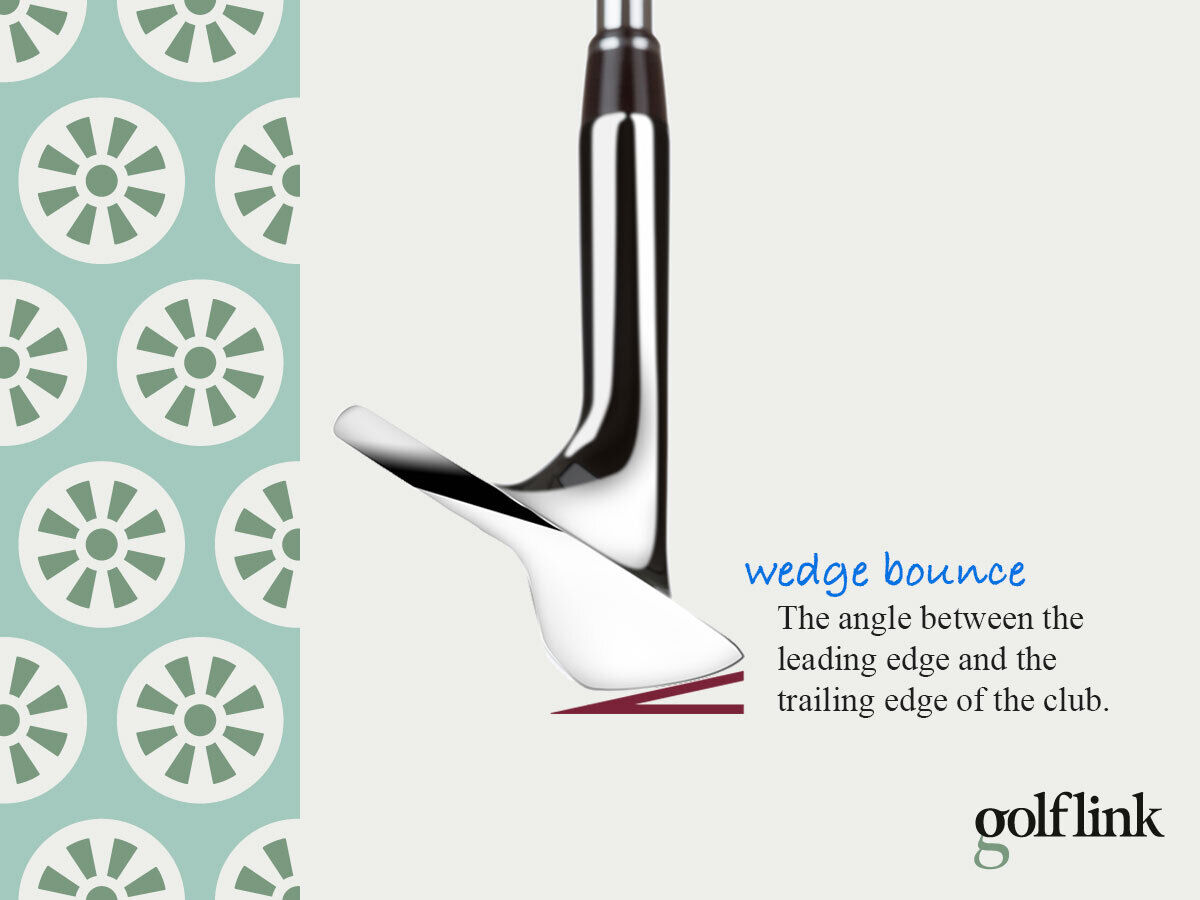How Understanding Wedge Bounce Can Help Your Golf Game
Once you understand wedge bounce, you can use it to optimize your wedge game.

You probably know off the top of your head how much loft each of your wedges has, but without checking, can you tell me how much bounce is on each of your wedges, or explain what wedge bounce is? If you can, you’re in the minority. If you can’t, you’re in the right place.
Wedge bounce is the angle between the leading edge and the trailing edge of the club. Low-bounce wedges have 4-6 degrees of bounce, mid-bounce wedges have 7-10 degrees of bounce, and high-bounce wedges have 10-plus degrees degrees of bounce.
Wedge bounce is important because like loft, the amount of bounce on a wedge impacts how the club performs from various lies, turf types, shot types, and swing profiles. So here’s the complete explanation of wedge bounce, plus your guide to selecting the ideal bounce for your wedges.
Wedge Bounce Explained

Wedge bounce is the angle between the leading edge and the trailing edge of the club.
We’ve established that bounce is the angle of a club’s sole from the leading edge to the trailing edge. In the address position, a wedge’s trailing edge sits lower than the leading edge. This is the bounce angle.
The fact is, all clubs have bounce, but bounce is more pronounced, and has a bigger influence on your game, in the wedges. The bounce of your wedge dictates how the club interacts with the turf. That’s why you need to consider your angle of attack, plus the type of turf and the type of lies you prefer to play each wedge from to find the best bounce for your game.
How Much Bounce is Right for You?
Vokey Wedge Selector
This tool gives you the ideal loft and bounce for each wedge in your set, personalized to your game
When you pick out your wedges, you probably have lofts in mind for each wedge to ensure your set is cohesive. For example, my gap, sand, and lob wedges are 50, 54 and 58 degrees, which transition smoothly into my 44-degree pitching wedge.
Merely selecting wedges based of loft, however, isn’t enough. When selecting each wedge, you should carefully consider the primary shots you want to hit with that club, the typical course conditions you play in, and how steep or shallow your swing is for the shots you intend to play.
This chart illustrates which bounce is appropriate for which golfers and situations.
Bounce Comparison Chart
| Bounce Level | Swing Profile | Turf Conditions | Shot Types |
| Low (4-6°) | Shallow angle of attack | Firm sand & turf | Clean strike, tight lies, flop shots |
| Mid (7°-10°) | Neutral angle of attack | Widest variety, not particularly soft or firm | Controlling distance & trajectory |
| High (10°+) | Steep angle of attack | Soft sand & turf | More spin & control |
Low Bounce Wedges (4-6 Degrees)
Wedges with 4-6° of bounce are considered low bounce. This means the leading edge sits closer to the ground.
- Low-bounce wedges are best for crisp contact.
- Low-bounce wedges are better for players with shallow, sweeper-style swings who take minimal divots
- Low bounce wedges are optimal for firm turf and sand conditions.
- Low-bounce wedges are the best option for hitting high flop shots and getting clean contact off tight lies
Mid Bounce Wedges (7-10 Degrees)
Mid-bounce Wedges have 7-10° of bounce and are better suited for shot-making and controlling trajectory.
- Mid-bounce wedges are most suitable for the widest range of players and favor a neutral attack angle
- Mid-bounce wedges are best for players who play in a wide range of course conditions, or who play courses that aren’t particularly firm or soft
- Mid-bounce wedges are best for creating green-side shots, and controlling distance and trajectory
High Bounce Wedges (10+ Degrees)
Wedges with more than 10° of bounce fall into the high bounce category. The high bounce helps the club glide through the ground.
- High-bounce wedges are best for players with a steep angle of attack because bounce can help prevent the leading edge from digging into the turf or sand
- High-bounce wedges are great for softer turf and sand conditions as the club can glide through the ground better
- High-bounce wedges help players generate more spin and green-side control
Selecting the Perfect Bounce
Just like players vary the lofts in their wedges, many players incorporate various bounces into their wedge set as well. Mixing your bounces gives you the most options in your short game, using this information wisely on the course allows you to get the most out of your equipment.
To help you identify the perfect bounce for you, you can answer eight quick questions about your game and get a bounce recommendation through the Bounce Selector Tool on vokey.com.